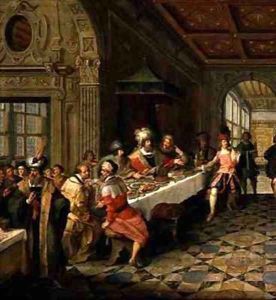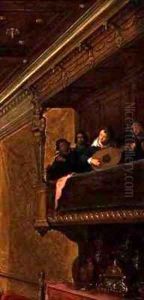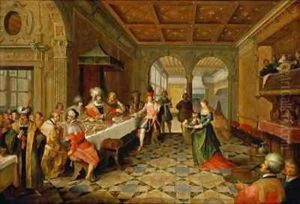Frans & Vries, Paul V. de Francken Paintings
Frans Francken the Younger was a Flemish painter who was born in Antwerp around 1540 or 1545 and died in 1616. He belonged to the Francken family, a dynasty of artists that played a significant role in the development of Flemish art in the 16th and 17th centuries. Frans was the son of Frans Francken the Elder and the brother of Hieronymus Francken I and Ambrosius Francken I, who were also painters. He is often referred to as 'de Vries' to distinguish him from his relatives.
Frans Francken the Younger is best known for his work in the genre of history painting, which includes biblical, mythological, and historical subjects. His oeuvre also features many cabinet paintings, a type of small painting popular among collectors of the period. These works often depicted intricate and crowded scenes with numerous figures, showcasing his talent for detail and composition.
Francken was a versatile artist, adept in the Mannerist style that was popular in the late 16th century, characterized by artificial elegance and the elongation of figures. However, as his career progressed, he began to incorporate more naturalistic elements into his work, which was indicative of the shift towards Baroque sensibilities. His paintings were also known for their lively colors and the incorporation of luxurious objects, which reflected the tastes of the wealthy merchant class in Antwerp.
In addition to his paintings, Francken was a successful art dealer and had a significant influence on the art market in Antwerp. He was a member of the city's Guild of St. Luke, an association of artists, and held the position of deacon in the years 1605 and 1610. His workshop was highly productive, and many of his relatives and other artists trained there.
Frans Francken the Younger's legacy is marked by his influence on the generation of artists that followed. His innovative compositions and subject matter choices were emulated by other painters, and his work helped to establish Antwerp as a major center for art during the period. His paintings can be found in numerous museum collections around the world, including the Louvre in Paris and the Hermitage Museum in Saint Petersburg.


